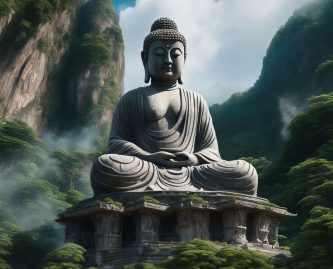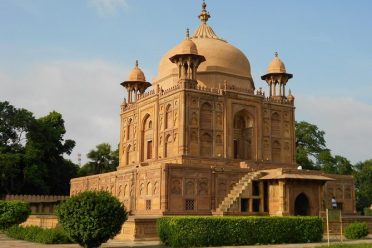Where am I : India Tour Packages » Most Popular Packages » Bodhgaya Tour Packages
View Details
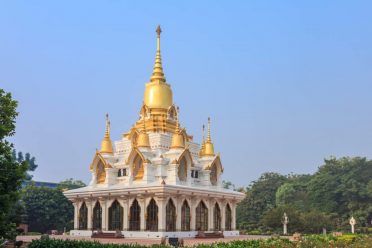
Destinations Covered : Varanasi » Bodhgaya » Patna » Kushinagar » Ayodhya
View Details
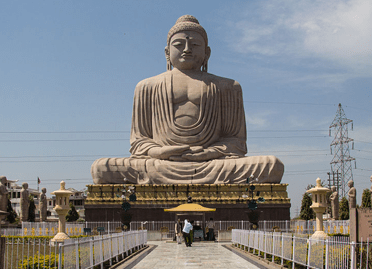
Destinations Covered : Delhi » Bodhgaya » Varanasi » Kushinagar » Lumbini » Kapilavastu » Shravasti » Lucknow
View Details
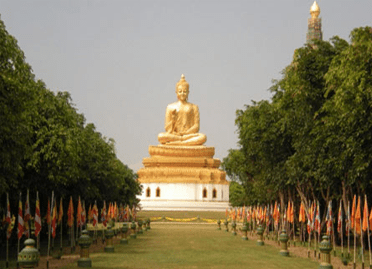
Destinations Covered : Varanasi » Bodhgaya » Rajgir » Nalanda » Patna » Kushinagar » Lumbini » Kapilavastu » Shravasti » Balrampur » Lucknow
View Details
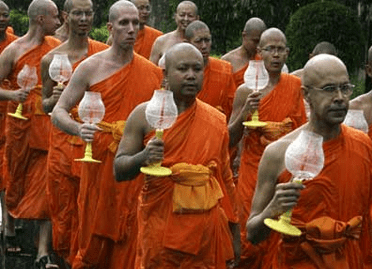
Destinations Covered : Delhi » Agra » Lucknow » Balrampur » Lumbini » Kushinagar » Patna » Bodhgaya » Varanasi
Bodhgaya Tour Packages
Bodhgaya is one of the tremendous unforgotten cities by tourists. This small city is five hours from the well-known Varanasi. Here we will explain what to see in Bodhgaya and whether it is worth visiting. Bodhgaya, one of the holy places in Buddhism, where Siddharta Gautama reached enlightenment.
However, in the Bodhgaya, there have many things to see. Historical places related to the life of Buddha could say a few important temples of the Jain and Sikh religions also abound; more famous than these are the ruins of the ancient university of Nalanda. So, let's start our travel to the incredible Bodhgaya.
Bodhgaya
Bodhgaya is one of the most popular pilgrimage sites globally for Buddhist pilgrims. Nearly 26 centuries ago, Prince Siddhartha Gautama attained enlightenment here under a Bodhi tree and thus became the Buddha. The Mahabodhi Temple is a UNESCO-inscribed World Heritage Site for its cultural significance.
The temples and monasteries presented here are built by international Buddhist communities. These monasteries and temples are dotted around and thus attract pilgrims worldwide to study, meditate, and absorb the atmosphere.
Located in one of India's poorest states, Bihar, this city is one of the sacred places of Buddhism. Here is the tree under which the Buddha attained enlightenment and began what would become one of the world's great religions.
What is the Indian city of Bodhgaya known for?
A significant part of India's "tourist" places is somehow connected with the peoples' religions inhabiting this country. The small town of Bodhgaya in northeastern India was no exception. According to Buddhist beliefs, it was there, approximately in 500 BC, on Gautam Siddhartha's meditation site. He achieved enlightenment, and the temple was founded first, and then the city.
As you know, Buddhism is a relatively peaceful religion in which the connection between all living beings is of particular importance. Gautama Siddhartha meditated under a tree before he attained enlightenment and became the world-revered Supreme Buddha. Actually, around the tree, one of the shrines of Buddhism, the Mahabodhi Temple, was built. Most historians date it back to the first century AD.
After Buddhism became forgotten in India, the temple fell into disrepair and collapsed. It was restored much later by the British Archaeological Society in the nineteenth century. In this form, to this day, it remains one of the four main places of pilgrimage for Buddhists. Even the holy Bodhi tree, grown from the seed of another holy tree in Sri Lanka, is now growing again near the temple.
Around this holy place are now located about a dozen Buddhist temples. Like any place of religious worship, this place attracts not only pilgrims but also numerous lovers of Asian exoticism and ordinary tourists. By the way, this kind of tourism is considered expensive only because of ticket prices. India itself can hardly be called an expensive country.
The Mahabodhi Temple
As we said at the beginning, this city is one of the places of pilgrimage for Buddhists. The main attraction is the Mahabodhi Temple, part of the World Heritage of Humanity by UNESCO.This temple is a relatively large complex where the tree where the Buddha meditated for six weeks until reaching nirvana or enlightenment is located. It is made up of different temples built in the places where Buddha was meditating. Better than a description, a photo.
A few years ago, there was an attack inside the complex, where up to three bombs exploded. They decided to prohibit entry with electronic devices except for the camera to avoid further misfortunes. To store them, they have free guarded lockers, although we recommend that you do not take them directly. If you want to take photos with your mobile, you will not be able to do it.
The Mahabodhi Temple is beautiful, it must be admitted, and there is a calm atmosphere. Many Buddhist monks and many pilgrims are meditating in any corner.
Bodhi Tree
To the left of the Mahabodhi Temple is a Bodhi tree, the central symbol of Buddhism. It marks where the original Bodhi tree once stood, where the Buddha received his revelation. Siddhartha meditated under a sacred fig tree in Bodh Gaya for over a month. On December 8, Buddhists worldwide celebrate Bodhi Day, a festival celebrating the Buddha's enlightenment under the Bodhi tree.
The current Bodhi tree may be the fifth generation of the original tree. Surrounding the Bodhi tree are beautifully carved stupas, temples, and several Buddha statues where you can see Buddhist monks sitting quietly, reading books, or meditating. It is said that Sanghamitta, the daughter of King Ashoka, took a branch from the original Bodhi tree in Bodh Gaya and planted it in the city of Anuradhapura in Sri Lanka. That linden tree is still alive and is believed to be the oldest surviving tree globally. The present Bodhi tree in Bodh Gaya is believed to have grown from saplings brought from Sri Lanka.
Prague Bodhi Hill
Prague Bodhi Mountain is about 7 kilometers from Bodh Gaya. The Buddha is believed to have lived a simple life in a cave on this mountain for seven years before becoming a Buddha. He believed that one could find the truth through asceticism during his practice.
A small temple in the Wari Cave is now known as Deng Ge Temple, where the Buddha meditated. To the top of the mountain, a short hike offers spectacular views of the surrounding land and the ruins of several stupas. You can also see Mahabodhi Temple from here. Generally, it takes 3-4 hours from Bodh Gaya to Prague Bodhi.
Rajayatana
It is said that this is where the Buddha spent his seventh and final week of meditation after his enlightenment. He also preached to passersby and gave them eight locks of his hair, which are believed to be stored as relics in the Shwedagon pagoda in Rangoon.
Muchlinda Sarovar
This was where the Buddha spent his sixth week after his enlightenment. It is said that a strong storm broke out while the Buddha was meditating there, soaking him. The king of the nagas of the lake, named Muchalinda, covered the Buddha's head with his hood to protect him. Now we can see a statue of Buddha with the hood of a snake on his head. Muchalinda Sarovar faces south and comes after the meditation park if he is walking clockwise around the facility.
Sujata village
The village of Sujata is one of the most important places for Buddhists, as it is associated with the name of the Buddha himself and the story of his life.
The village is associated with the name of the girl Sujata. She had the honor to make an offering to Shakyamuni in the form of rice porridge in milk. At that moment, the Buddha was weakened and realized that the endless mortification of the flesh is like a stretched string that will eventually break. After taking food from the hands of a girl, he sat down under the sacred Bodhi Tree to meditate, after which he achieved Great Enlightenment.
In honor of Sujata, not only was the village named but also a small temple was erected at the place where the girl fed the wanderer. The temple houses statues of the Buddha himself and Sujata.
Sujata Kuti Stupa
Situated across the Falgu River, the massive Sujata Kuti stupa marks the home of Sujata, the cowherd girl who fed the Buddha with a bowl of rice and completed her seven years of penance. Sujata Mandir is a little further afield, the tree site where Sujata offered food to the Buddha.
Archaeological Society of India Museum
The Archaeological Society of India Museum is home to an excellent collection of Buddhist and Hindu relics, mainly related to the Pala dynasty. Established in 1956, the museum features two galleries, an open courtyard, and two terraces displaying various antiquities. You can find bronze statues, terracotta objects, Buddha images, stone sculptures, pillars, panels, railings, and plates, among other things. It is located within the Mahabodhi temple complex. The museum's second gallery features an idol of Vishnu's Varaha avatar, and visitors can also learn about the Dashavatara incarnation of the deity. Although it is challenging to summarize the vast history of Bodh Gaya and the immense Buddhist culture,
Rivers of Bodh Gaya
One of the ancestral cult and Hindu pilgrimage centers is the Niranjana River, which is now called Falgu. Having spent six long years in asceticism, the Buddha entered the sacred water and washed with its waters, achieving great enlightenment and mastering it.
However, not only the river itself is a sacred place for worshipers of the Buddha, but the nearby territories also have sacred significance. The Bodhi tree, or the Tree of Enlightenment, is a favorite place for pilgrims to meditate. This is where a girl named Sujata brought milk collected from a thousand cows to the Buddha, from which the cream was skimmed seven times, and many other places that attract Buddhists and thousands of tourists.
Stupa of Nirvana
The Nirvana Stupa is located in the state of Bihar (Northeast India). According to legend, the Buddha achieved insight and enlightenment while meditating under the tree of Awakening. A copy of this tree grows at the entrance to the Mahabodhi temple, which was built on the site of an ancient excavation by Ashoka. Under the tree is the throne of Prince Gautama, on which he reached nirvana, Vajrasana - a slab made of red sandstone.
The Temple of the Great Awakening Mahabodhi is a giant stupa made in the traditional Indian style. Every year, the Nirvana Stupa is visited by millions of pilgrims from all over the world. Bodhgaya is one of the four most important sacred places for Buddhists Associated with the Buddha's life. In April-May, the Buddha Jayanti festival is held here, at which magnificent celebrations are held in honor of his birth, insight, and departure into nirvana.
Meditation Park
The new Meditation Park is southeast of the Mahabodhi temple, entirely something else. It has meditation huts, discussion and congregation areas, and two substantial prayer bells. The park, which has water fountains and a lotus pond, is a place full of calm in a town full of noise.
Ajapala Nigrodha
The Buddha spent the fifth week of meditation here after his enlightenment. A stone pillar at the site marks the fig tree. A bronze bell was placed near the pillar and is said to have been donated by pilgrims from Burma in the 19th century.
Chankramana
This is the sacred place where the Buddha spent the third week of his meditation journey after his enlightenment. It is believed that a lotus bloomed where the Buddha stepped. A structure with symbols of lotus flowers known as the Jewel promenade Shrines was created, which was erected to show where the flowers came from.
Dungeshwari Caves
The Mahakala Caves are also known as the Mahakala Caves. The Dungeshwari Caves are located 12 kilometers northeast of Bodh Gaya. It is believed that the Buddha meditated here for six years before going to Bodh Gaya to attain enlightenment. A gilded memorial sculpture of an emaciated Buddha commemorating his harsh penance is enshrined in one of the cave temples. In another cave is located a massive statue of Buddha almost 2 meters high, built as a tribute to that phase of Buddha's life.
There is a popular myth about these cave temples, and it is said that during his mortification Gautama became emaciated. A shepherdess named Sujata was touched by his weak appearance and offered him food and water. Later, Gautama understood that he could not attain enlightenment by humiliating himself and continued on his journey to Bodh Gaya. One of the cave temples is dedicated to the Hindu goddess, Dungenshwari.
Ratanaghara
Ratanaghara is also known as the House of Gems and is believed to be where the Buddha spent the fourth week in meditation. It is said that a lightning bolt of six colors originated from his body during this week, and the Buddhists designated his flag with these colors.
Animesh Lochan Chaitya
It is where the Buddha is believed to have spent his second week after attaining enlightenment, standing and gazing uninterruptedly at the Bodhi Tree. This is one of the seven holy places within the confines of the Mahabodhi temple complex. These points are believed to mark the places where the Buddha spent a week meditating at each. 'Animesh Lochan Chaitya' means 'opening eyes,' literally translated. It is also called the Precious Path, as it is believed by many that the Buddha spent another week walking between Animesh Lochan Chaitya and the Bodhi Tree. Devotees make sure to visit this place while visiting Gaya.
Shopping
In the city's heart the Tibetan Refugee market is famous place for shopping. One would be hard-pressed not to be impressed by its sheer diversity. It is teeming with curious buys, from exotic Tibetan and Chinese food to fashion and lifestyle products. It is hard to get bored while visiting here as there are many exciting things on display, like the articles about the Tibetan faith. The idols of Lord Buddha would main attraction of someone. These idols are made of metal and sandalwood.
Bodh Gaya Multimedia Museum
This museum presents the life of Buddha in a visual format with the help of 3D animation movies. The show is divided into four sections covering the Buddha's history, geography, and thoughts and is easy to understand and attractively presented. It was created so that you can take a look at the life of the Buddha in the most exciting way possible. It tells of his journey from childhood to the time when he attained nirvana.
Festival
The biggest festival in Bodh Gaya is Buddha Jayanti, held on the full moon in late April or May every year. Other festivals in Bodh Gaya include the annual Mahatsava Buddha, a three-day celebration filled with cultural and religious activities. Maha Kala Puja is held in monasteries for several days before the New Year to purify and remove obstacles.
How to get to Bodhgaya
Since Bodhgaya is a small town lying outside the main highways, you can get into it through the nearby major cities.
Many trains pass through Gaya. Through Patna too, but it is much further from Bodhgaya. Then it would be best if you did not look for the bus station and the bus to Bodhgaya. It is much faster, more convenient and not too expensive to take an auto-rickshaw in the square near the railway station. Arrange to get to the Bus stand, the monasteries area, or the Mahabodi Temple area.
Theoretically, there is an airport in Gai, but it is small, and few people fly there. But there is an airport in Patna. But from there you have to either take a bus or a taxi to go 135 km to Bodhgaya. Of course, it's still faster than by train, but an option for those who are more prosperous.
Travel tips
- The electricity supply can be patchy in Bodh Gaya, so it's good to bring a flashlight.
- It is traditional to take off your shoes before entering the inner parts of the main Mahabodhi temple complex and all monasteries in the area. We recommend the use of loose and respectful clothes and simple sandals.
- The city is not very big and can be explored on foot or by bicycle.
India is an extraordinary land of contrasts, combining ancient architecture with modern office buildings, slums with picturesque beaches, poverty, and wealth. Fans of the secrets of antiquity should travel to the incredible Bodhgaya and wander around the ancient places.
Speak to our Experts!
Instant Quote, Best Deals - 100% Customizable, Includes hotels + car + guides Cost depends on various factors like, number of people you are, travel dates, category of hotel and transportation etc.Drop your Inquiry to get the best deals as per your requirements. 100% Satisfaction Guaranteed. Rated 5* in TripAdvisor.Loading...




